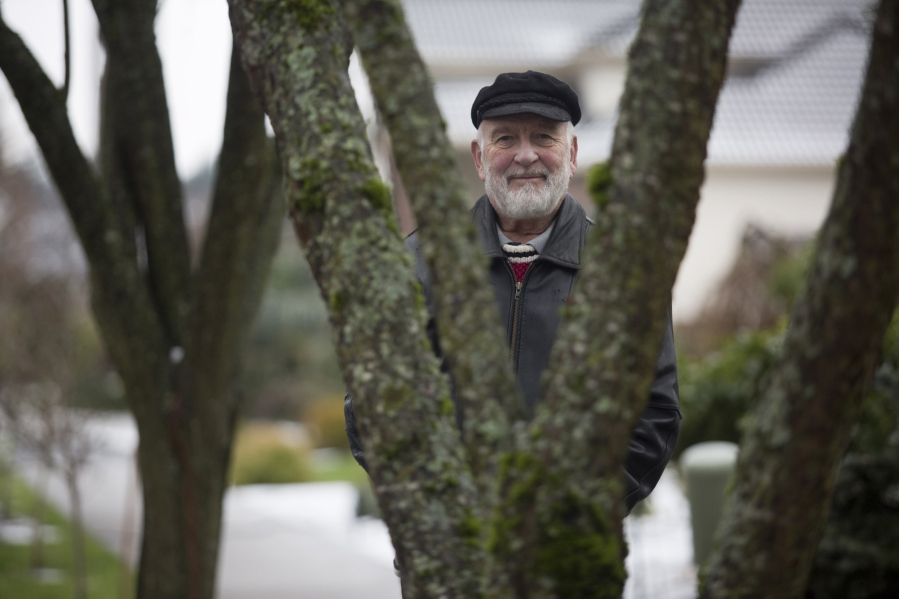When residents in Vancouver’s First Place neighborhood have a question about trees, they need only turn to fellow neighbor Gene Wigglesworth.
“They know me as the tree guy,” he said.
The story behind why Wigglesworth has gained the unofficial title started about five years ago, when he and his neighbors started noticing a problem with the flowering plum trees.
“They were up and down every street and in the spring for about two weeks the flowers were just gorgeous,” he said.
But eventually, neighbors started noticing a problem.
“The leaves had holes all through them, and they were dropping all summer long,” Wigglesworth said. “They would grow and drop and grow and drop. The branches on the lower level were dying.”
So Wigglesworth, a 74-year-old former environmental science teacher, formed a committee of neighbors to research what was happening. He learned that when the neighborhood was first developed, the developer required builders to plant two or three trees. The most popular, he said, was the flowering plum.
The committee took leaves to nurseries and consulted with the city’s urban forestry department. They learned that the trees suffered from shot hole disease.
“It’s a fungus and when you have the wet winters and springs we have, it moves the fungus around,” Vancouver Urban Forester Charles Ray said. “It’s really hard to control.”
Homeowners can treat the disease through a spray, but it will never go away entirely, Ray said.
“If you have lots of trees together, then it takes them all out,” Wigglesworth said. “It wasn’t a worry, it was reality.”
Wigglesworth’s committee decided that the best step forward was to encourage neighbors to remove the trees.
“But if you cut trees down, what do you put back? That’s when we came up with our list,” Wigglesworth said.
He and committee members researched trees and came up with a list of recommendations — six to 10 trees that were both approved by the city and resistant to disease. They educated neighbors and for the most part, he said, neighbors were receptive to the replacement idea.
“A lot of people didn’t like what was happening to their trees, how they looked with the dead branches and everything,” he said. “It caught on. A lot of it was just sharing information.”
To make the replacement process an easier one, Wigglesworth orchestrated a few large plantings, negotiating deals with arborists and nurseries and asking for neighbors to volunteer.
“When it was time to plant or go get more trees or haul something, I had neighbors that stepped up all the time,” he said.
And when it came to removing the plum trees, the group was conscientious and resourceful.
“When we cut down trees on a massive scale, we ground them up and we took the chips and used them for bark chips around fence lines” in the First Place Park, he said. “It helps keep moisture in the ground and it blocks the weeds somewhat.”
Some neighbors worked with the nonprofit Friends of Trees to replace their diseased plum tree, while others decided to keep their tree instead. Wigglesworth said that about 75 percent of the plum trees in the neighborhood have been replaced.
Ray said that the replacement effort is a good thing for the health of trees, which provide so many environmental benefits.
“Diversity is a good thing,” Ray said. “I think Gene’s a great asset to the neighborhood. He tends to work with neighbors and get them organized and moving in the same direction.”
But Wigglesworth said that it’s just part of his nature.
“I’m a tree person,” he said. “Some people deal with puppies and some people deal with raising money for hospitals. I plant trees.”




